Carole Baker remembers the day about 20 years ago when she took her mother to the doctor for a physical.
“He told her that she had osteoporosis, and he looked at me and said, ‘I would suggest you do something to prevent this, because it is hereditary,’” Baker said.
Baker, now 81, wasted no time. She joined a strength-training class at a local gym, starting what would become a lifelong habit. Her daughter, Hollie Rademacher, 59, took the class alongside her, but as part of her own exercise regimen.
This mother-daughter duo is a great example of what can be achieved with strength training at any age.
“Women lose muscle over time, and we gain fat,” said Kim DeLaFuente, a community exercise educator with Spectrum Health Healthier Communities. “The best approach is to maintain physical activity and strength over your lifetime. While that’s not always feasible, the good news is that regardless of age or physical condition, you can benefit from resistance training.
“It’s never too late,” DeLaFuente added. “Our bodies will respond, and we can gain strength even if it’s later in life.”
Women are often intimidated by strength training. They assume it requires many hours in the gym, and it will only result in the creation of bulky muscle mass.
These notions are simply wrong.
There are many methods of strength training, and they’re often achievable in the comfort of your own home or office. And, typically, they result in muscle toning—not in bulking up like a football player.
Among the many additional benefits of strengthening exercises: they’re more effective at burning calories (muscle burns more calories than fat); they’ll help you lower your overall risk of falls (you’re building a stronger body): they’ll help lower your cholesterol and blood pressure; and they improve blood sugar levels and mental health.
The ultimate benefit of these improvements is greater independence throughout life, DeLaFuente said.
Approach with gusto
If you’re ready to get started with strength training, here are DeLaFuente’s recommendations:
- Personalize it: Find someone who understands strength and resistance training—someone who can personalize it for you. This could be a personal trainer or a class instructor. There are also online videos and apps that can help you lay out a strength-training program. DeLaFuente recommends this video with resistance bands.
- Get creative: If you don’t like going to the gym and lifting weights, think creatively. Resistance bands, body-resisted exercises (crunches, squats and pushups), medicine balls (they now come with handles, too) and water aerobics are great ways to build strength.
- Seek variety: As women age, their endurance levels may drop and interests may change. Reassess and look for different activities that interest you. Cross-training with different forms of exercise and activity also allows you to use your muscles in different ways.
- Don’t be afraid to start small: Squeeze in strength training whenever you can. Keep weights or resistance bands next to your favorite chair and do a few exercises while you’re watching television. “It’s like anything—we just have to keep it in front of us,” DeLaFuente said. “If it’s there and not tucked away, it reminds us.”
- Form first: Injury usually comes from bad form. “I would much rather see somebody work on form first,” she said. “The resistance part can come later. You don’t even have to incorporate weights or bands right away.” For instance: Learn good squat form without weights by standing in front of a chair and standing up and down.
- Target all the muscle groups: The idea is to do some exercises hitting all the major muscles: legs, core (back, abs and hip), shoulders, chest, triceps, biceps and upper back.
Build happiness
Baker said she likes to do her strength training at the gym, where you’ll find her doing a two-hour workout three days a week. She prefers free weights to the machines. You’ll even find her on the bench press, with her husband spotting her.
She loves it, but even she has her rough days.
“Sometimes I think, ‘Oh, do I want to go to the gym today?’” she said.
The benefits and payoffs keep her coming back for more, day after day. She’s a breast cancer survivor, with a bone density equivalent to that of a 30-year-old woman.
She attributes this and other healthy outcomes to her dedication to strength training and fitness.
Rademacher, meanwhile, plans to follow her mother’s path to good health.
As a physical education teacher at East Grand Rapids Middle School, Rademacher also practices the physical fitness message she preaches to her students. She runs about five times a week and does strength training at least three times a week in the gym.
She hopes to encourage students and young women to embrace daily exercise, rather than dread it, as too many adults do.
“My message to them would be to keep moving,” Rademacher said. “Strength training doesn’t necessarily mean having to lift weights. You can do a lot of strength training through other activities, like riding a bike, running or swimming.”
But there’s another important point: Strength can build happiness and positivity.
“I just feel strong and I feel healthy,” Rademacher said. “It gives you a better self-image. I don’t feel wimpy. I can carry those boxes. I can lift that. I can do the yard work.
Sometimes, she said, she’ll hear someone say to her, “You shouldn’t be doing that at your age.”
“And I say, ‘No, I can,’” she said.
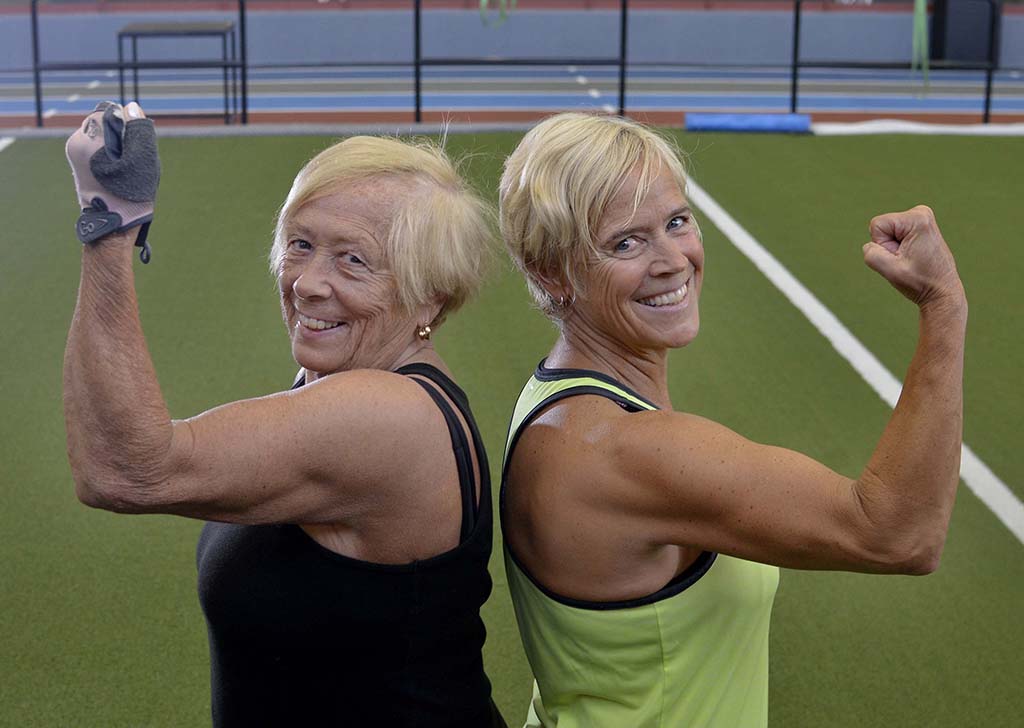
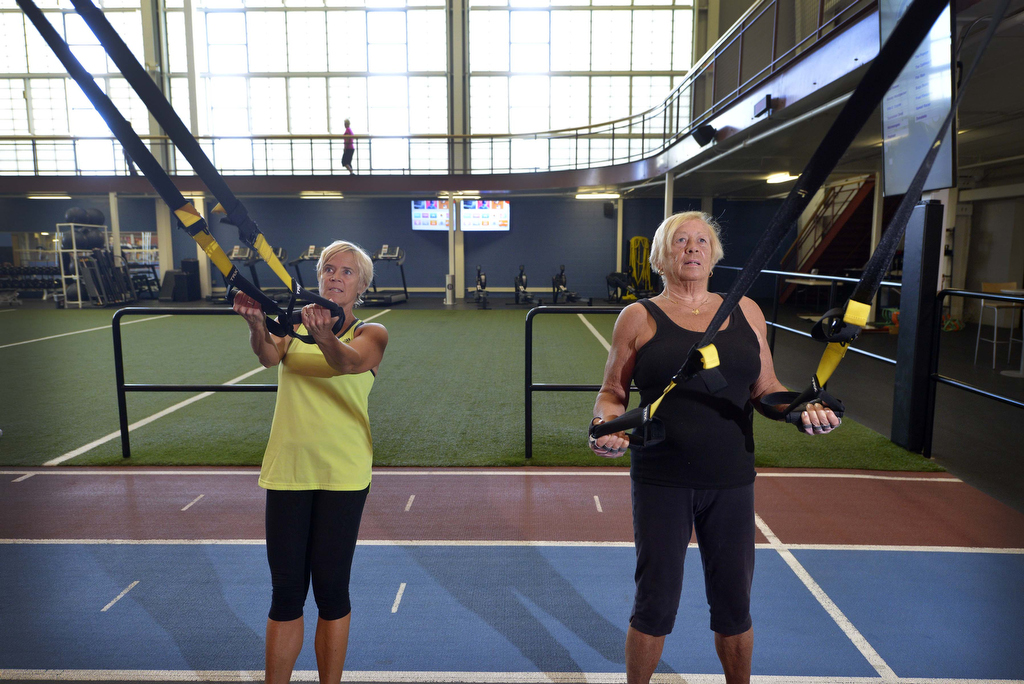
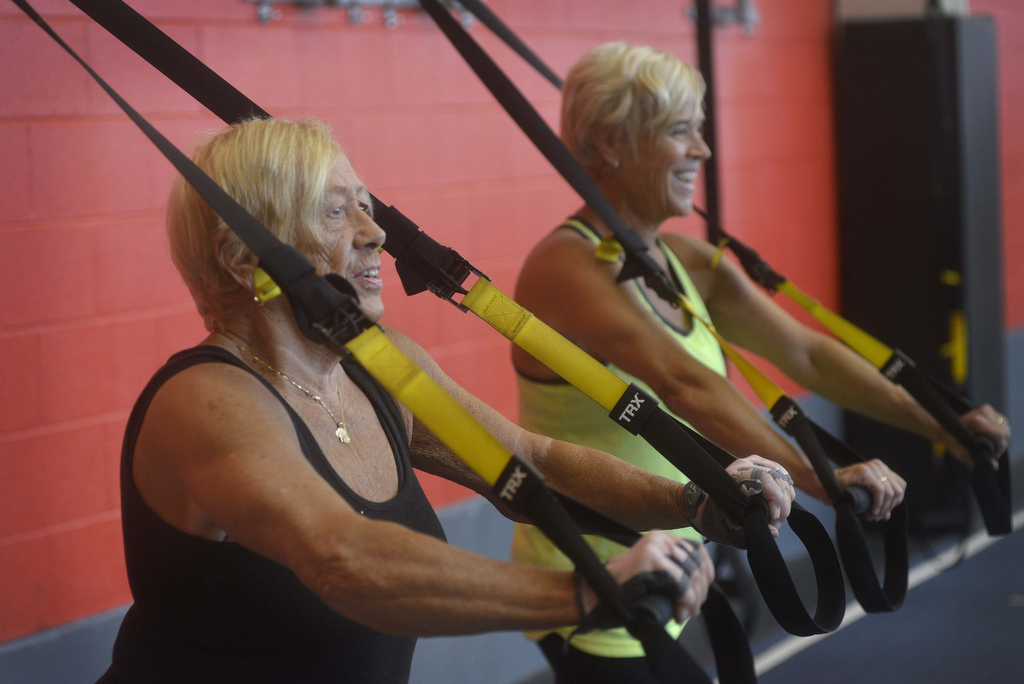

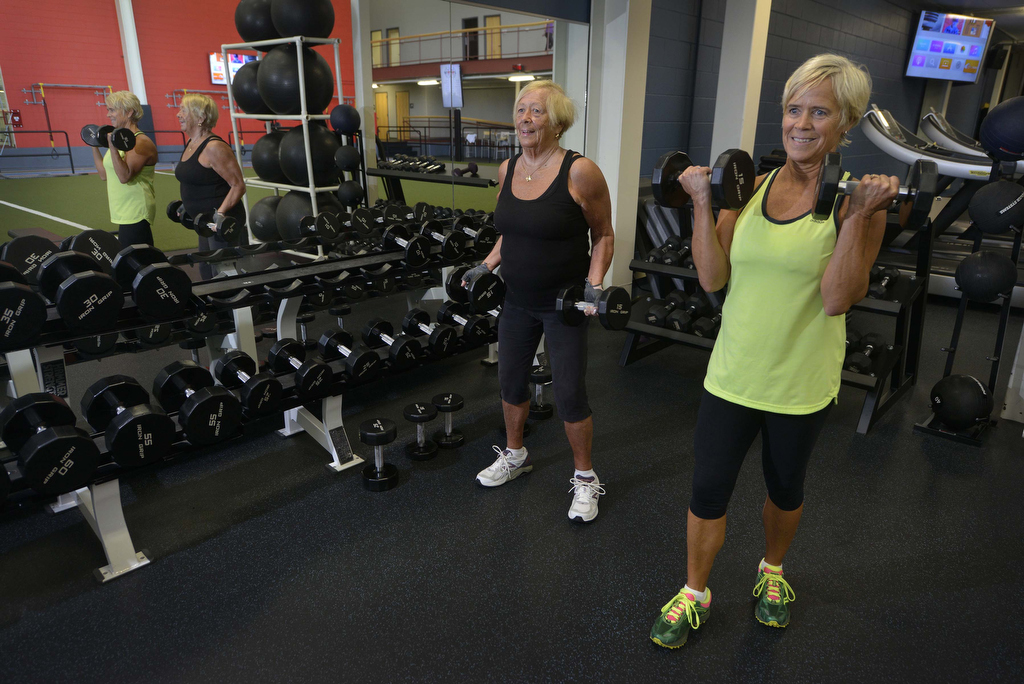


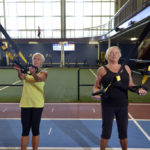

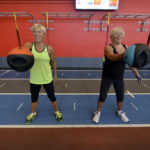

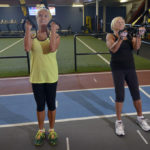
 /a>
/a>
 /a>
/a>
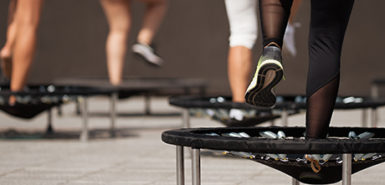 /a>
/a>
Way to go, Hollie and Carole! You are truly an inspiration!
Very encouraging!
I started water aerobics about 4 years ago and it does make a difference even at age 72! 😀
Way to go, Diane! 🙂